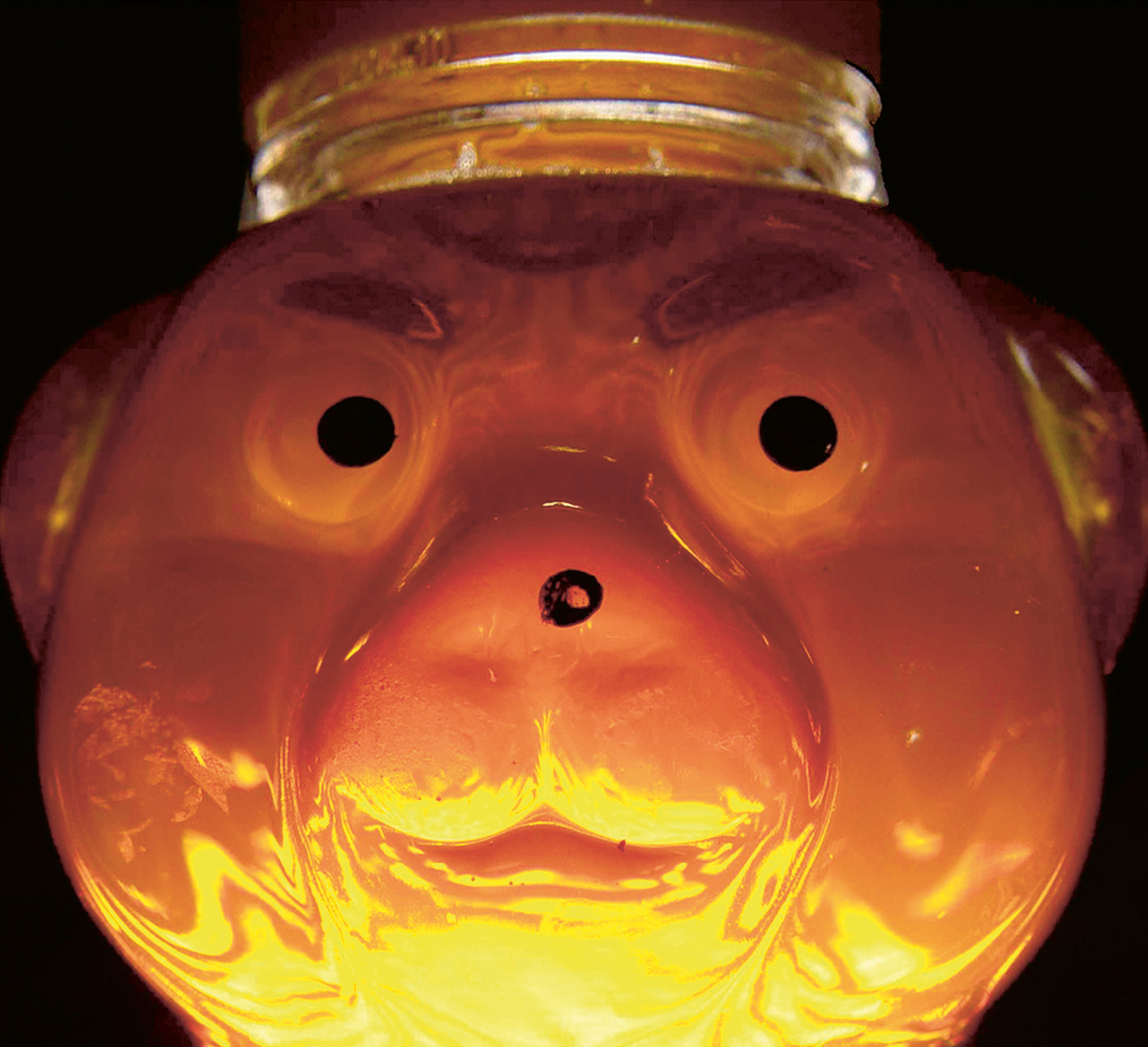Ingestion / Like Bees to Honey
From honey laundering to artisanal apiculture
Mary Kosut and Lisa Jean Moore
“Ingestion” is a column that explores food within a framework informed by aesthetics, history, and philosophy.

Everywhere and ordinary, the plastic supermarket honey bear is rather pedestrian considering the expanding list of gourmet honey available to self-described locavores and foodies. Clover and buckwheat are familiar names, but most novices couldn’t recognize the difference between them, or between other common single-variety honeys like sourwood and eucalyptus. Over the last decade, honey—otherwise described as “bee barf” by a seasoned New York City beekeeper—has been transformed into a gourmet specialty item, especially attractive to gift-givers seeking the unusual. Like “house-made” butter and pickles, honey is among a number of historically utilitarian foods that have undergone culinary transformation in the artisanal DIY era. We may have added it to teas and cough drops to cure sore throats, or used it as an alternative to sugar, but never before have we celebrated it as a specialty ingredient worthy of a sommelier. Just as wines from Bordeaux or Tuscany are identified by processing strategies, grape lineages, and geographical areas, types of honey hold culinary prestige. A raw basswood, for instance, was described by Food & Wine as having “spicy aromas, fresh fruit flavors, and a clean, minty finish.”
For the urbane, idiosyncratic and locally sourced honey is a mark of adventurousness and distinction—a gastronomic treasure to be discovered. Beekeepers proudly describe the unique characteristics of their honey, emphasizing the shade of color (from light yellow to rich reddish brown), fragrance (“musky,” “floral,” “earthy”), and taste (“citrusy,” “tangy,” “caramel”). Individual varietals express different levels of sweetness, which a knowing palate can identify. Each type of honey has a flavor profile, and in New York City, honey produced by Crown Heights bees might be distinct from that produced by bees in the Bronx. Farmers’ markets in the city show evidence of this growing segmentation, with beekeepers using folksy, crafted labels to signal the authenticity of their Harlem or Greenpoint honey. Raw unfiltered honey made from treatment-free bees collected on a rooftop in Park Slope costs several times as much as generic brands. This premium is an expression of the honey’s goût de terroir, which, in offering a literal taste of a metropolitan neighborhood, adds another layer to the product’s culinary capital.
Urban bees make honey as they forage up to three miles from their hives, pollinating flowers within local microecologies and co-existing with millions of human and nonhuman neighbors. Sucking nectar from blossoms with their tongues, forager bees mix it with an enzyme, invertase, in their mouths and store it in their honey stomachs. Returning to the hive, forager bees orally pass the nectar to house bees who further “chew” it; this process adds more invertase to the nectar, which is then stored in the honeycomb. Bees fan the comb to aid evaporation and turn the substance into syrupy honey, plugging up the cells with wax. While the process is universal, metropolitan bees are distinct from their rural kin. The complex ecology of the city comprises many hyper-local environments, where seasonal bloom, urban detritus, and weather conditions affect honey characteristics. This sense of place not only colors signature palate notes; it also signifies cosmopolitan heritage, much like a T-shirt with BROOKLYN plastered across the front. Both sell the city in indisputably marketable ways.